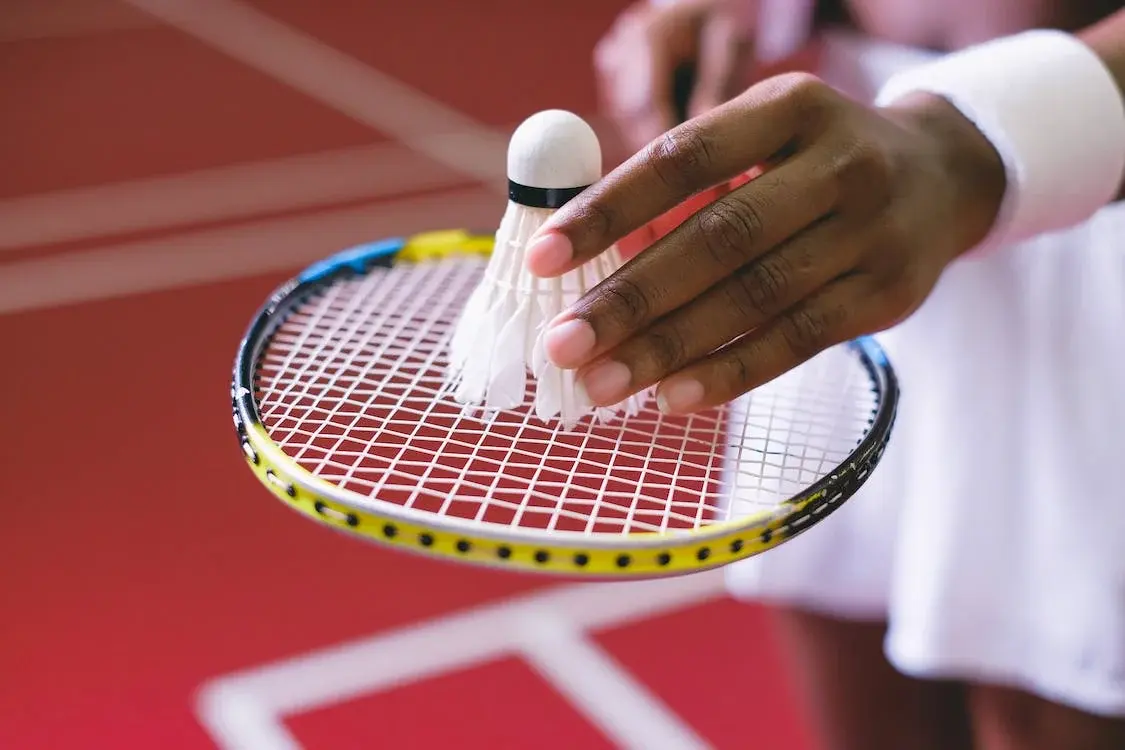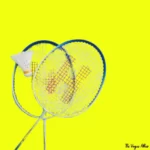
Serving is an important aspect of badminton as it can set the tone for the rally and potentially give a player an advantage
The rules for serving in badminton are designed to ensure fairness and safety for the players
What are the main types of serves in badminton?
There are two main types of serves in badminton:
1) The High Serve and
2) The Low Serve
- The high serve is usually used to start a rally and is hit with a downward motion to send the shuttlecock over the net and into the opponent’s service court
- The low serve in badminton is used to surprise the opponent and is hit with a flatter trajectory, aiming to land the shuttlecock just over the net and close to the front of the service court
- Players are allowed to use a variety of grips, spins, and placements with their serves to try and deceive their opponents
- It is important for players to master both the high serve and low serve in order to have a well-rounded game.
Badminton Serving Rules for Singles
In badminton, the service is used to start each rally and is an important part of the game. There are specific rules that govern how the service should be executed, and it’s important for players to understand these rules in order to play the game fairly and competitively.
Positioning of the Server and Receiver:
- Before the service, the server and receiver must be positioned correctly on the court.
- The server stands in the right service court, while the receiver stands in the left service court.
- These positions are determined by the score and serve: if the score is an odd number, the server serves from the right court
- If the score is an even number, the server serves from the left court.
Badminton Serving Rules for Doubles
- When the serving side has not scored or has scored an even number of points in that game, a serving side player must serve from the right service court.
- When the serving side has scored an odd number of points in the game, a serving player will serve from the left service court.
- The player of the receiving side who served last shall stay in the same service court from where he served last. The reverse pattern shall apply to the opponent.
- The player of the receiving side standing in the diagonally opposite service court to the server shall be the receiver.
- The players can not change their respective service courts until they score a point when their side is serving.
Service Courts and Service Boxes
- The service court is the area from which the service must be made.
- The service court is defined by the service line, which is a long line that runs parallel to the back boundary line.
- The service box is a smaller area within the service court that is marked by shorter lines. The serve must be hit from within the service box.
Requirements for a Legal Serve
There are several requirements for a legal service in badminton:
- The serve must be hit from within the service box.
- The shuttlecock must be hit below waist height.
- The shuttlecock must be hit diagonally across the court, from the server’s right service court to the receiver’s left service court (or vice versa).
- The shuttlecock must land in the receiver’s service court.
If the server fails to meet any of these requirements, it is considered a service fault, and the opponent scores a point. Players are allowed two service faults per game, after which they lose the serve, and the opponent scores a point. It’s important for players to understand these rules in order to execute a legal service and avoid giving away points to their opponent.
Service Faults and How to Avoid Them
A service fault occurs when a player does not serve correctly. There are several common mistakes that can result in a service fault, including:
- Serving before the receiver is ready
- Serving from the wrong court
- Serving outside the service lines
- Serving with a racket that touches the net
To avoid service faults, players should pay close attention to their service and make sure they follow all of the rules. This includes waiting for the receiver to be ready, serving from the correct court, and serving within the lines. Players should also be mindful of their racket position, as any contact with the net will result in a service fault.
The Service Order in Doubles Plays:
In doubles play, the serving order is determined by the position of the players on the court. The server on the right serves first, followed by the server on the left. After each rally, the server on the opposite side of the court serves next.
This continues until one team reaches the score of 21 points, at which point the serving order is reversed.
It’s important for players to pay attention to the serving order and make sure they serve from the correct court at the appropriate time. Failing to do so can result in a service fault and give the other team an advantage.
By understanding and following these intermediate rules for serving in badminton, players can improve their serve and have a greater chance of success in the game.
Service Judges and Their Role
In high-level competition, there are service judges who are responsible for enforcing the service rules. These judges are positioned at the back of the court and are responsible for making calls on whether a service is good or a fault. They use their judgment and observation to determine the validity of a service, and their decision is final.
Service Practice and Warm-up Protocols
Before a match, players are allowed a set amount of time to warm up and practice their serves. During this time, players may practice serving on any part of the court.
However, once the match has begun, players are only allowed to serve at the designated service court. It is important for players to warm up and practice their serves before a match, as a strong serve can be a crucial weapon in badminton.
Tips for Improving Your Serve in Badminton
- Grip: The grip on your racket is important for generating power and control in your serve. A common grip for serving is the forehand grip, which involves placing your thumb and index finger on either side of the racket handle, with the other fingers wrapped around the handle. Experiment with different grips to find what works best for you.
- Stance: The stance you take for your service is important for balance and stability. Stand facing the side of the court with your feet shoulder-width apart and your weight evenly distributed on both feet. You may also want to bend your knees slightly to generate more power in your serve.
- Racquet Preparation: As you get ready to serve, hold your racket in a ready position by your shoulder, with the head of the racket pointed towards the sky. This will allow you to easily bring the racket back and then forward to hit the shuttlecock.
- Techniques for Different Types of Serves: There are several different types of serves you can use in badminton, each with its own advantages and challenges. Here are the 4 basic types of serves in badminton namely; High Serve, Low Serve, Flick Serve, and Drive Serve.
Conclusion
In conclusion, serving is a key skill in badminton that can give you an advantage in a game. By improving your grip, stance, and racquet preparation, and practicing different types of serves, you can become a more effective server.
Remember to stay relaxed and positive, and don’t be afraid to experiment and try new things. With practice and dedication, you can become a formidable server on the badminton court.



2 thoughts on “Badminton Serving Rules: A Comprehensive Guide”